A Journey Through the Arctic National Wildlife Refuge
One of the world’s last pristine wild places is on the front lines of climate change—and threatened by the Trump administration’s determination to open the Arctic to drilling. These photos speak to why we must fight both.
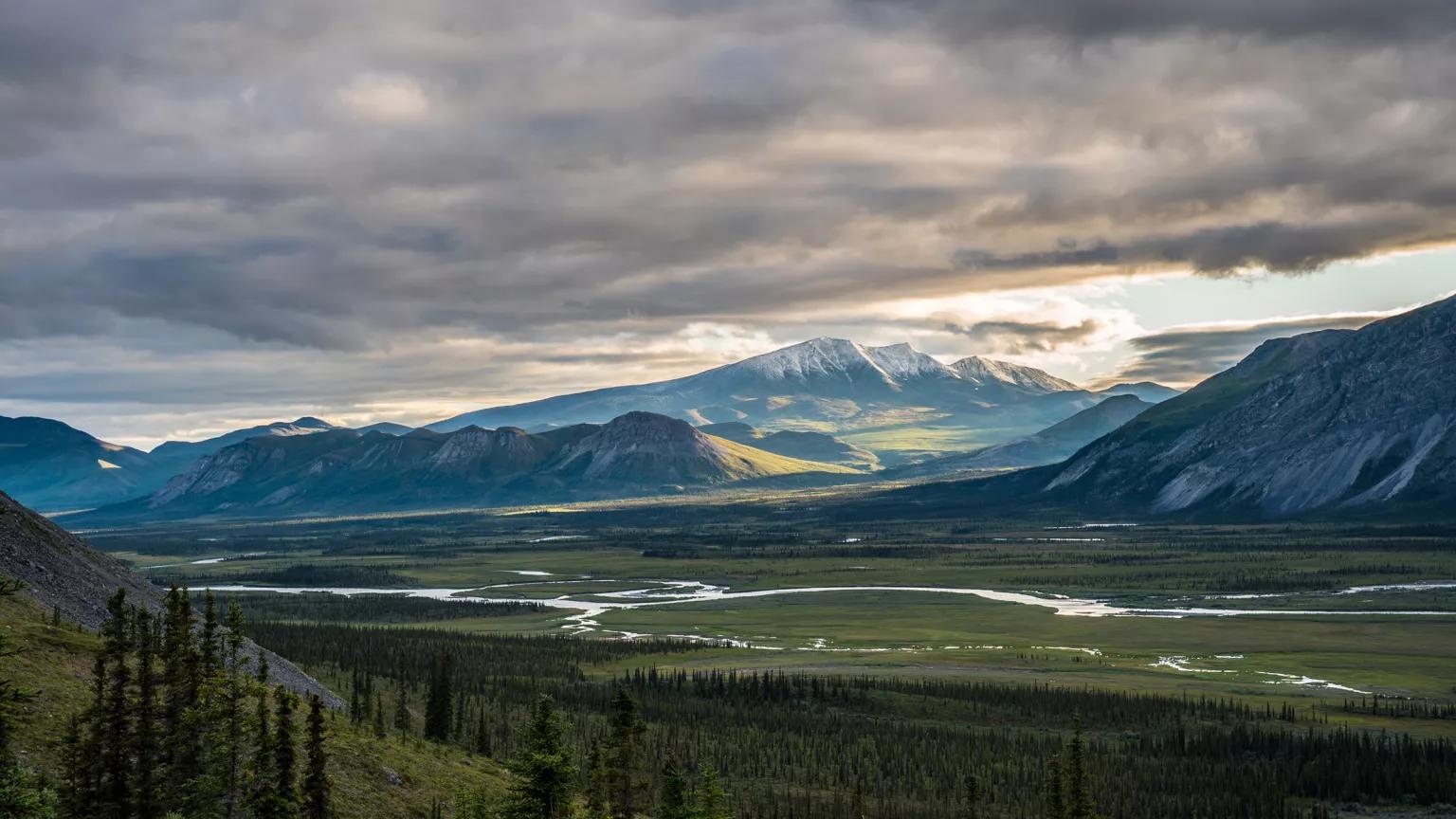
Alexis Bonogofsky/USFWS
The Arctic National Wildlife Refuge is remote, lying entirely north of the Arctic Circle and lacking any roads or trails. But even if you never set foot there, it’s easy to understand just how spectacular the country’s largest wildlife refuge really is.
This swath of pristine wilderness in northeastern Alaska spans 19 million acres, roughly the size of the entire state of South Carolina. Unsurprisingly, such a vast area encompasses multiple ecological zones, and its diverse habitats are home to a stunning array of wildlife. Polar bears, musk oxen, gray wolves, caribou, and migratory birds from all 50 states all depend on the Arctic Refuge’s protected landscape for survival. It’s no wonder that biologists refer to it as America’s Serengeti, and the Gwich’in people—who have lived in northern Alaska and Canada for thousands of years—call its coastal plain “the sacred place where life begins.”
But none of those extraordinary qualities appear to have swayed the determination of the Trump administration to open the fragile landscape to oil and gas drilling. “The word refuge means ‘a place that provides shelter and protection,’ ” says Niel Lawrence, Alaska director for NRDC. “Oil and gas exploration would mean the exact opposite, threatening wildlife and leaving these lands forever marred.”
These photos represent just a small portion of what’s at stake, from glacier-capped peaks to verdant river valleys to a vast coastal plain that teems with new life come summertime.
The stunning annual migration of the Porcupine caribou (bottom right) begins in April, when the herd’s roughly 200,000 members head north to calve on the refuge’s coastal plain. The herd takes its name from the Porcupine River, which flows through its range. The caribou’s natural history has been inextricably intertwined with the culture of the Gwich’in people for thousands of years.
Caribou are the only species in the deer family in which both males and females grow antlers (top and bottom right). Males shed their antlers by mid-February, while females retain theirs until the spring breeding season.
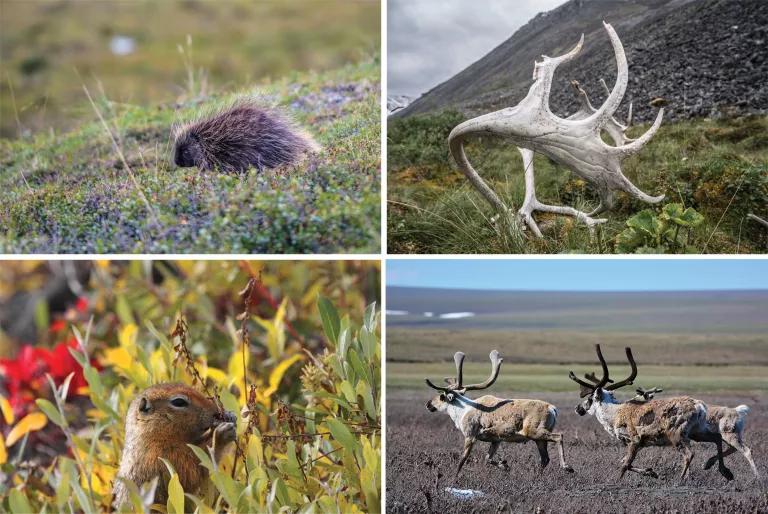
Clockwise from top left: Alexis Bonogofsky/USFWS (2), Niel Lawrence, Hillebrand/USFWS
A porcupine browses for an herbivorous snack (top left), while an Arctic ground squirrel (bottom left) nibbles its lunch near the Canning River. Active ground squirrels are a sure sign of summer in the refuge—these plump little mammals hibernate for seven to eight months of the year.
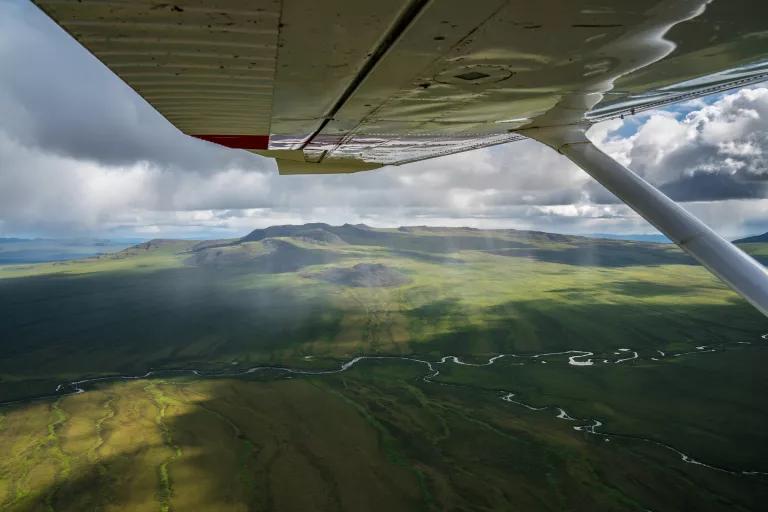
Alexis Bonogofsky/USFWS

Alexis Bonogofsky/USFWS
Rivers and streams, rather than roads, are the veins and arteries of the Arctic Refuge. In fact, there are no roads or established trails within the refuge; most visitors access it by air. The Sheenjek River (bottom left) flows past dramatic Arctic scenery on its route south from its origins in the glaciers of the Romanzof Mountains (bottom right).
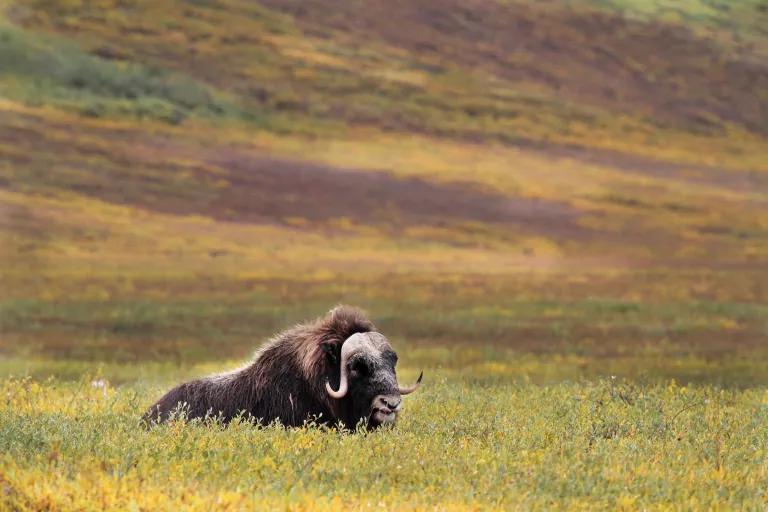
Katrina Liebich/USFWS
Musk oxen are the only large mammals that live on the Arctic coastal plain year-round. Their thick wool undercoat, stocky bodies, and long, shaggy outer hair make them uniquely adapted to frigid winter temperatures.
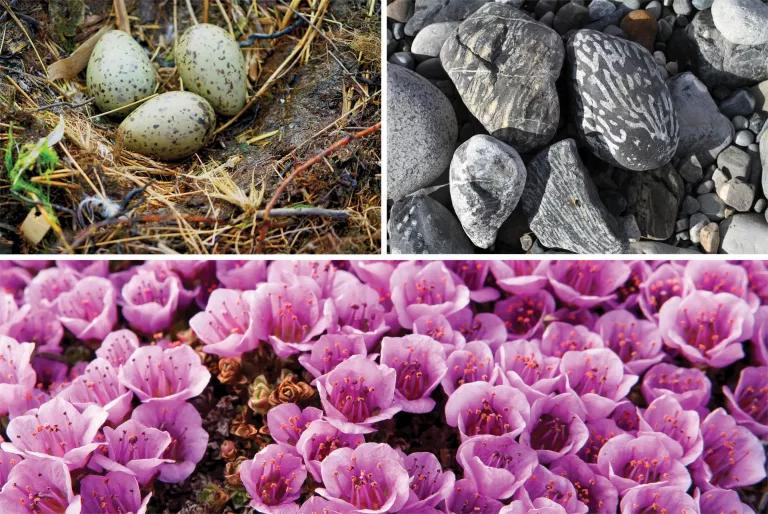
Clockwise from top left: Danielle Brigida/USFWS, Katrina Liebich/USFWS, Lisa Hupp/USFWS
Among the treasures one can find on a hike through the high Arctic: glaucous gull eggs (females typically lay three at a time), fossils and rocks lining the banks of the Canning River—a remnant of the area’s rich history—and an eye-catching cluster of purple mountain saxifrage. These edible, low-growing flowers are some of the first to bloom in the Arctic spring, showing up fashionably early as soon as the snow melts.
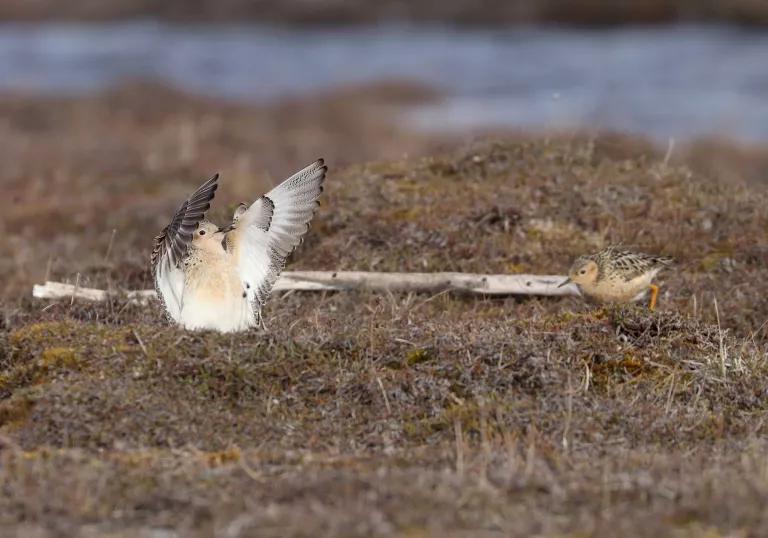
Shiloh Schulte/USFWS
A male buff-breasted sandpiper raises its wings to show off the white undersides in a courtship display. These shorebirds migrate all the way from South America to breed in the Arctic Refuge.
According to the U.S. Fish and Wildlife Service, more than 200 bird species have been recorded in the refuge, which sits at the intersection of our continent’s four main flyways as well as the East Asian–Australasian Flyway.
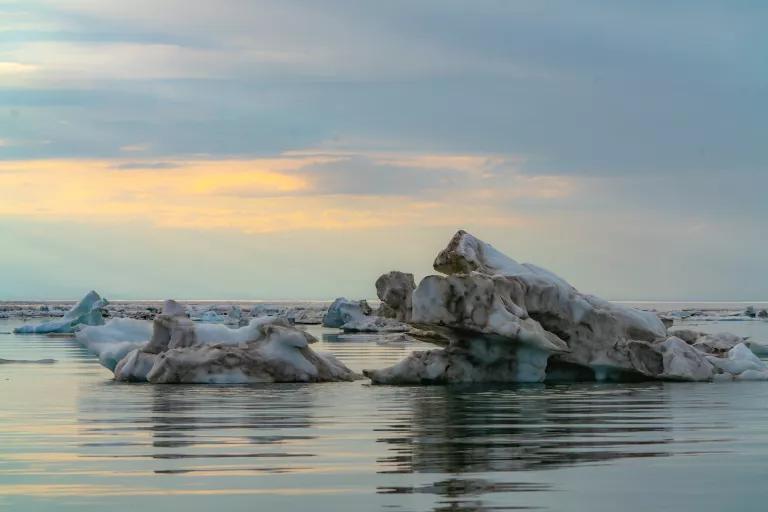
Danielle Brigida/USFWS
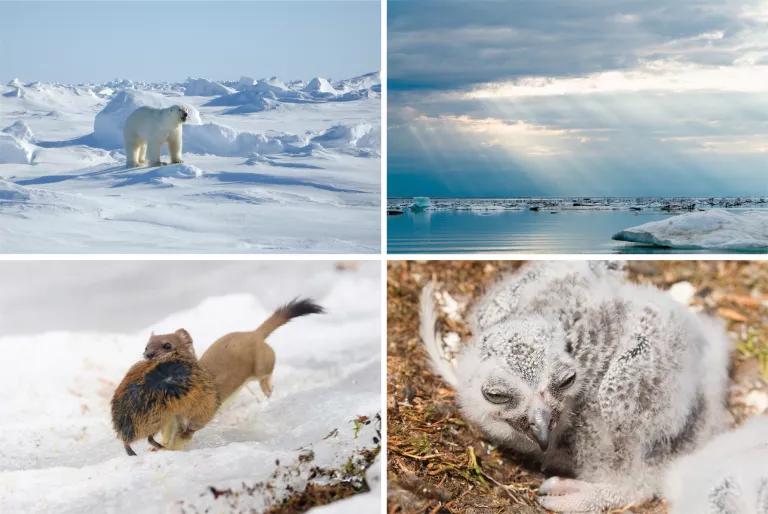
Clockwise from top left: Eric Regehr/USFWS, Danielle Brigida/USFWS, Shiloh Schulte/USFWS, Lisa Hupp/USFWS
Sea ice is thinning on the refuge’s shores, just one of many indicators of climate change throughout the Arctic region. The loss of ice represents a grave threat to the region’s iconic polar bears, which rely on it to access the fatty seals they’ve evolved to eat.
Warming temperatures are threatening other Arctic meat-eaters, too. One of the favorite foods of a variety of species—from snowy owls (bottom right, an owlet) to Arctic foxes to ermines (bottom left)—is lemmings. Numbers of these small mammals peak during the coldest winters. They survive by building vast networks beneath the insulating snowpack and padding their nests with musk ox wool. Increasingly mild weather is causing the tundra habitat to thaw and refreeze in an icy crust, causing lemming populations to crash and affecting the entire food chain.
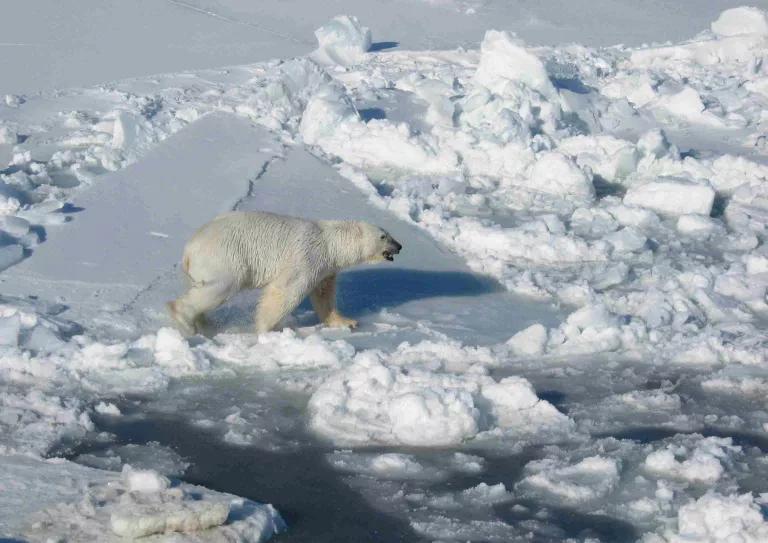
Eric Regehr/USFWS
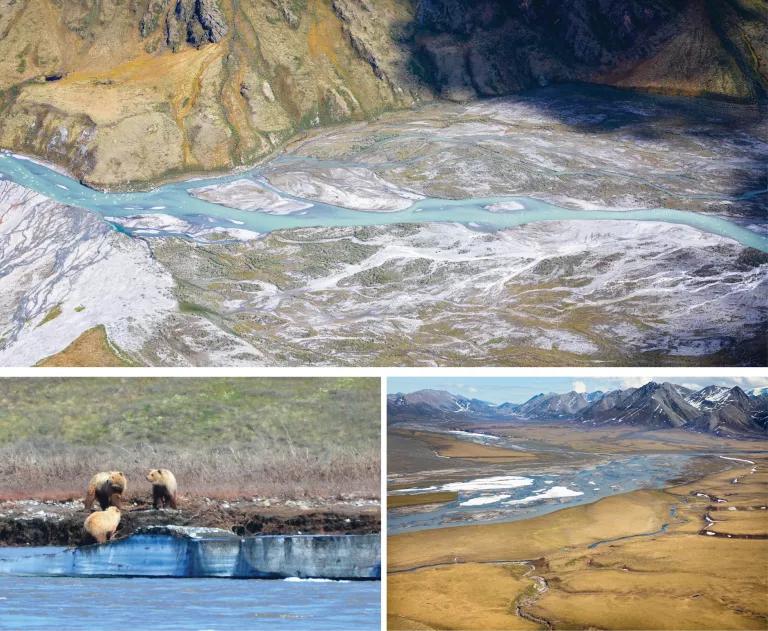
Clockwise from top: Lisa Hupp/USFWS (2), Niel Lawrence
The Arctic Refuge is the country’s most important onshore denning area for polar bears. The Brooks Range (bottom right), the northernmost drainage divide in North America, is the birthplace of the Canning River (top, bottom left), which forms the western boundary of the Arctic Refuge.
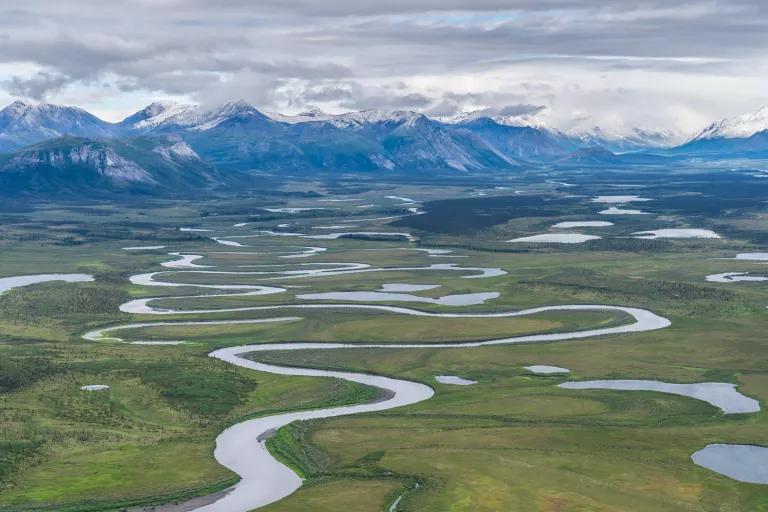
Alexis Bonogofsky/USFWS
The Sheenjek River is one of three rivers within the refuge protected under the Wild and Scenic Rivers Act. Designated wild rivers are considered to have “unique, rare, or exemplary resources that make them truly outstandingly remarkable.”
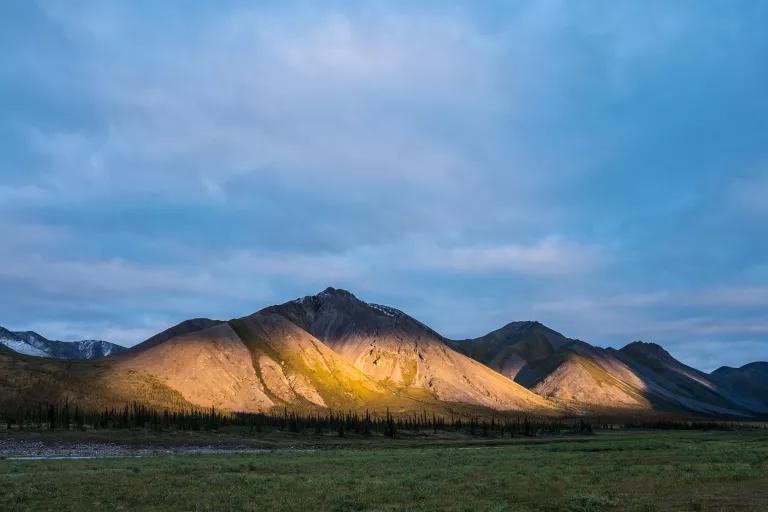
Alexis Bonogofsky/USFWS
“Here still survives one of Planet Earth’s own works of art. This one symbolizes freedom: freedom to continue, unhindered and forever if we are willing, the particular story of Planet Earth unfolding here.”
—Lowell Sumner, National Park Service biologist
This NRDC.org story is available for online republication by news media outlets or nonprofits under these conditions: The writer(s) must be credited with a byline; you must note prominently that the story was originally published by NRDC.org and link to the original; the story cannot be edited (beyond simple things such as grammar); you can’t resell the story in any form or grant republishing rights to other outlets; you can’t republish our material wholesale or automatically—you need to select stories individually; you can’t republish the photos or graphics on our site without specific permission; you should drop us a note to let us know when you’ve used one of our stories.
The Biden Administration Protects Millions of Acres of Arctic Alaska
The Biden Administration Cancels Its Offshore Drilling Plan for Alaska’s Cook Inlet—Let’s Keep It Off the Books
The Long, Long Battle for the Arctic National Wildlife Refuge